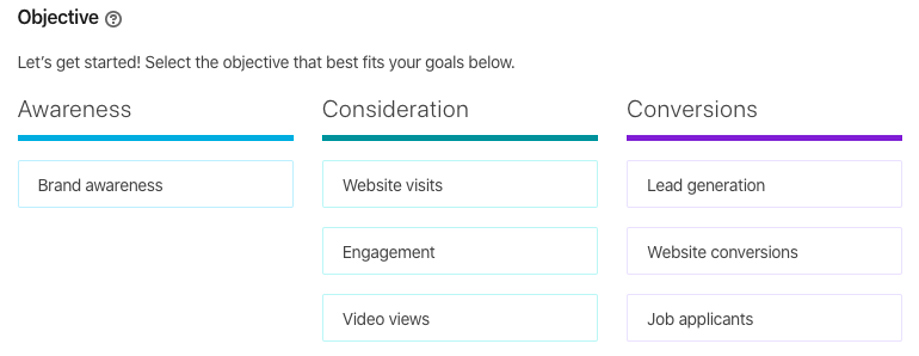Social media plays an important role in your growth marketing strategy. Social media channels are not only the place to increase your brand awareness and grow your audience, but also drive conversions and nurture your existing customers. Either way, all your marketing efforts only make sense if data shows any signs of growth. And to evaluate the growth, you need to track and analyze social media metrics.
Social media metrics are key performance indicators that demonstrate the efficiency and effectiveness of social media campaigns in achieving key business objectives. Therefore, the social media metrics you follow should depend on your social marketing goals and the KPIs you’ll analyze for success. First, determine your social media goals:
Now, you need to establish the social media metrics you will use to measure success at every step.
At the brand awareness stage, social media metrics generally include:
Social media metrics for engagement generally include:
1. Likes, Comments, Shares, Retweets: These are the main indicators of how engaging your social media content is. You should look at both the total number of reactions to your updates and engagement rates. The engagement rate is calculated by dividing the number of clicks, likes, comments, shares, and followers to impressions. Then comes in-depth analysis. This is because it’s especially important to understand what kind of content brings in likes, comments, and shares. When you figure that out, you can produce more of those posts and therefore increase your engagement rates. An equally important metric to monitor is unlike. Facebook Insights provide the number of net likes – showing the number of new likes minus the number of unlikes. Tracking the time period of unlikes, you can discover what really went south. Facebook also enables you to compare your average performance over time in terms of unlikes, organic likes, paid likes, and net likes. Twitter shows the most popular tweet of the month as well as brand mentions – which is especially crucial in the world of Twitter.
2. Amplification Rate: This is a term invented by Avinash Kausnik, Co-Founder of Market Motive Inc and Digital Marketing Evangelist for Google. The amplification rate is the ratio of shares on average for each post to the number of followers. It’s better to calculate*this rate* exclusively to one platform:
Twitter – # of retweets per tweet
Facebook – # of shares per post
Linkedin – # of shares per post
Instagram – # of regrams per post
YouTube – # of social sharing clicks
The amplification rate matters because:
*Social media platforms do not provide this metric.
3. Clicks: This shows the number of clicks on each post. If you want to drive traffic to your website through social media posts, the number of social visits to the website indicates whether it’s working or not. Even if the numbers are satisfactory, you need to further measure the impact of social media by looking at metrics like total page views, bounce rate, pages per session, and average session duration. Using Google Analytics, you can understand social users' flow, comparing traffic volumes and user traffic patterns through your site. You can also identify the high performing networks and measure the value of social media by tracking your conversions. Moreover, it’s possible to measure on-site user interaction with your content with social plugins.
4. Click-Through Rate (CTR): This is the percentage of clicks relative to impressions. This metric shows how engaging your social media posts are. Do they click on the links or call to action (CTA) buttons? It’s especially crucial while analyzing the effectiveness of social media ads. If CTR does not take off or slows down, you’d better immediately take action and revise your CTA.
Social media metrics for conversion generally include:
1. Conversion: This is the total number of times people take the desired action (download content, subscribe to a monthly newsletter, close a sale, etc.) after clicking on or seeing an ad. You should define your conversion goals while creating social media campaigns on related platforms. Is it for website conversions or increased engagement in your app?

Facebook Ads

Linkedin Ads
2. Conversion Rate: This is the percentage number of clicks that turned into conversions. It allows you to understand the success of social media channels along with your website or app and identify the areas of improvement.
3. Revenue: This is the monetary value of the conversions. You can check how much revenue was driven by social media channels.
4. Cost per conversion (CPC): This is the average amount you spent on each conversion (total spent divided by conversion). It helps you track, optimize, and report on your ad spending. If you’re targeting countries where click costs are higher or targeting keywords where competition is high, your cost per conversion will be above average. CPC is also helpful to evaluate the performance of ad campaigns. Combined with Return On Advertising Spend (ROAS), insights from CPC inform future marketing budgets and strategy.
5. Leads: This is the number of potential customers collected through social media campaigns.
Here’s a wide range of Social Media Marketing Tactics we have prepared for you to implement to your growth marketing activities. You can choose the tactics according to your main goals (Brand awareness + traffic generation, conversion, and retention) as well as the difficulty level (beginner, intermediate, advanced).